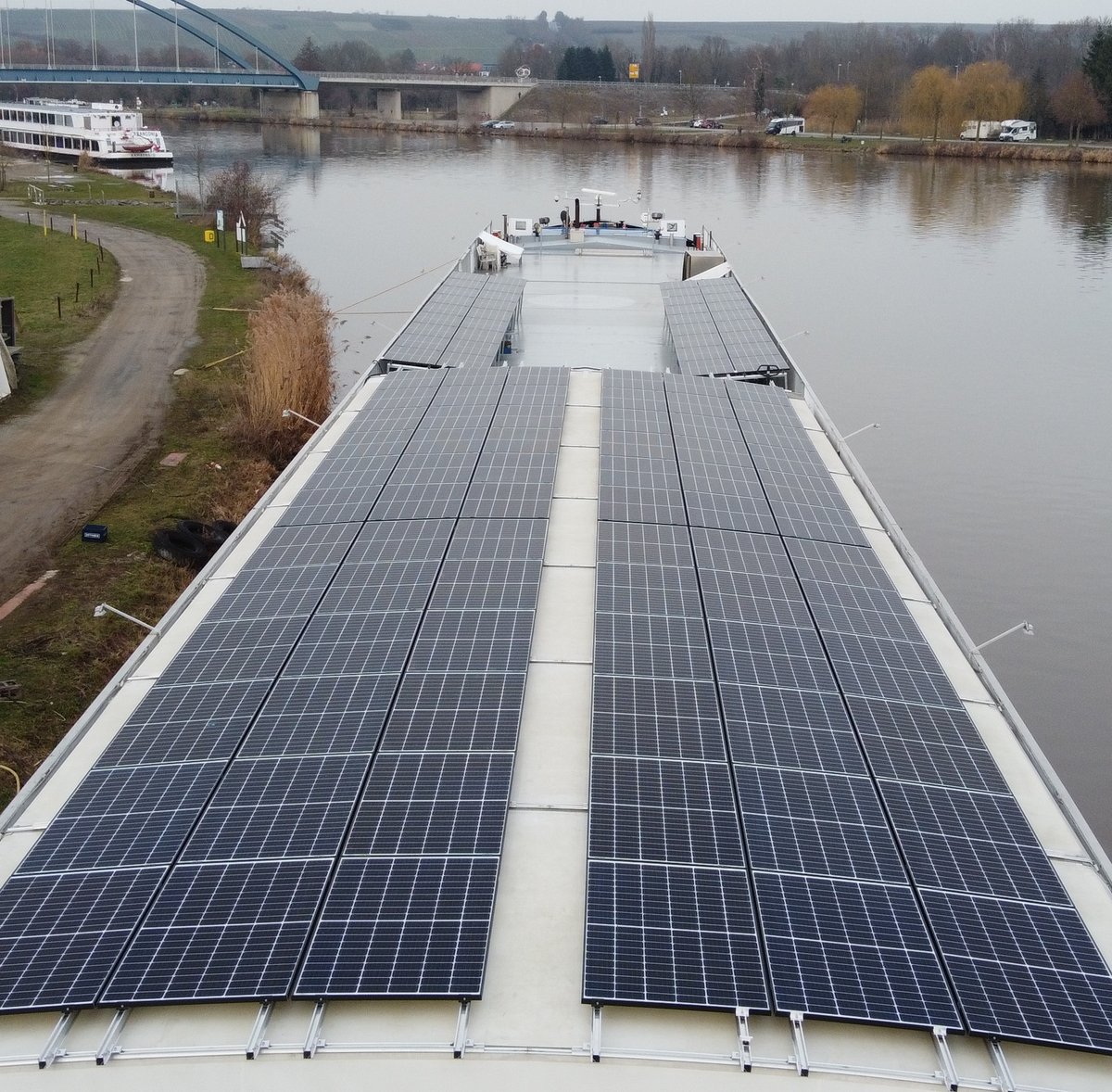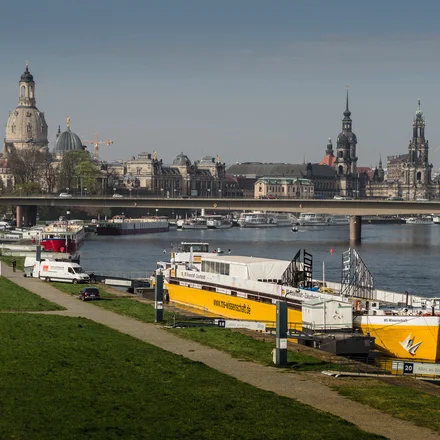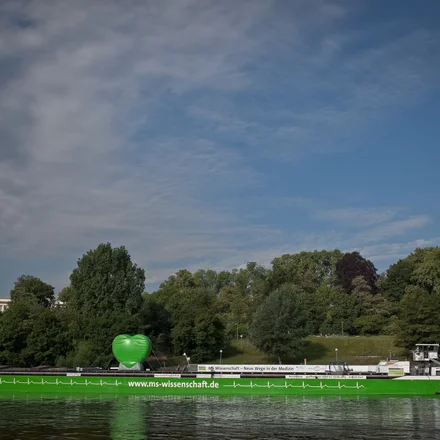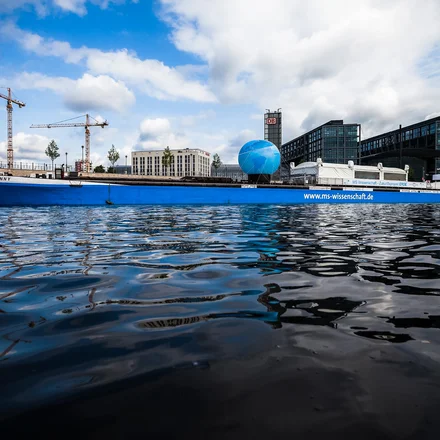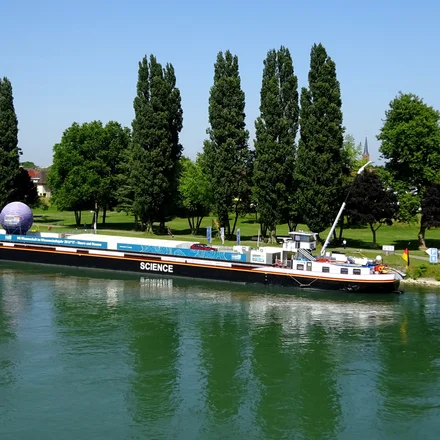Ship
From cargo vessel to exhibition ship
The MS Jenny, as the ship is called when it is not sailing in the name of science, was built in 1969 as MS VERA at the Elfring shipyard in Haren (Ems). After being sold to the Netherlands, it was bought by Karin and Albrecht Scheubner in 1987. Thanks to the resourceful owner and captain couple, it was converted into an exhibition and event ship. Since 2020 Andreas Schüll has been at the helm.
The ship has a length of 102 metres and a loading area of around 600 square metres. As a cargo ship, the MS Jenny has a loading capacity of 1,919 tons. This is roughly equivalent to the loading capacity of about 76 trucks.
The MS Jenny is driven by a Mitsubishi engine with an integrated SCR catalytic converter, which converts nitrogen monoxide (NO) and nitrogen dioxide (NO2) up to over 90 % to nitrogen (N2) and water (H2O).
MS Wissenschaft has been using GtL fuel for its diesel engines and gensets since 2016 - making it the first ship in Germany to do so. GtL fuel has physical properties that are broadly similar to those of conventional diesel fuel. However, the environmental compatibility of GtL fuels is much better: they are sulphur-free and contain neither organic nitrogen nor aromatic hydrocarbon compounds. The latter also leads to much lower soot emissions. They are also virtually odourless. At the same time, the fuel's efficiency values are very good. The fuel is produced from natural gas, hence the abbreviation GtL: Gas to Liquid.
For the majority of electricity generation, a diesel engine (operated with GtL) is used, which complies with the latest Stage III emissions standard. In addition, with a noise level of max. 55 dbA, the unit is significantly quieter than conventional generators. The electronic speed control provides a constant frequency of 50 Hz.
Since 2020, a photovoltaic system on deck has been supplying the exhibition with 35 kWh, making it independent of electricity from the generators on sunny days.
The MS Jenny can reach around 50 cities with more than 100,000 inhabitants in Germany - and often dock in the immediate vicinity of the city centres. As a mobile event location, the ship can thus bring an exhibition from place to place to the people without the need for assembly and disassembly or adaptation to the conditions of the respective exhibition location.
All fans of vessels will find here the technical data of the MS Wissenschaft:
- Year of construction: 1969 as MS "VERA" shipyard Elfring Haren/Ems, 1987 as MS "Jenny"
- Width: 9,50 m
- Length: 102 m
- Depth: during the exhibition 1.20; maximum 2.86 m
- Total tonnage: 1,919 tonnes (corresponds to a loading capacity of 76 trucks)
- Container loading capacity: 66 TEU
- Satellite navigation: 720° radar pilot
- Rear radar: Swiss JFS 364 C
- Front radar: Furuno RH RS 2002 R
- Bow thruster: Verhaar Omega-Jet 350 PS
- Engine: Mitsubishi type S12A2-Z3MPTAW-3, 701 kW/953 PS; with SCR catalytic converter [nitrogen monoxide (NO) and nitrogen dioxide (NO2) are converted to nitrogen (N2) and water (H2O) up to more than 90%].
- Engine power: 700 kW = 950 PS
